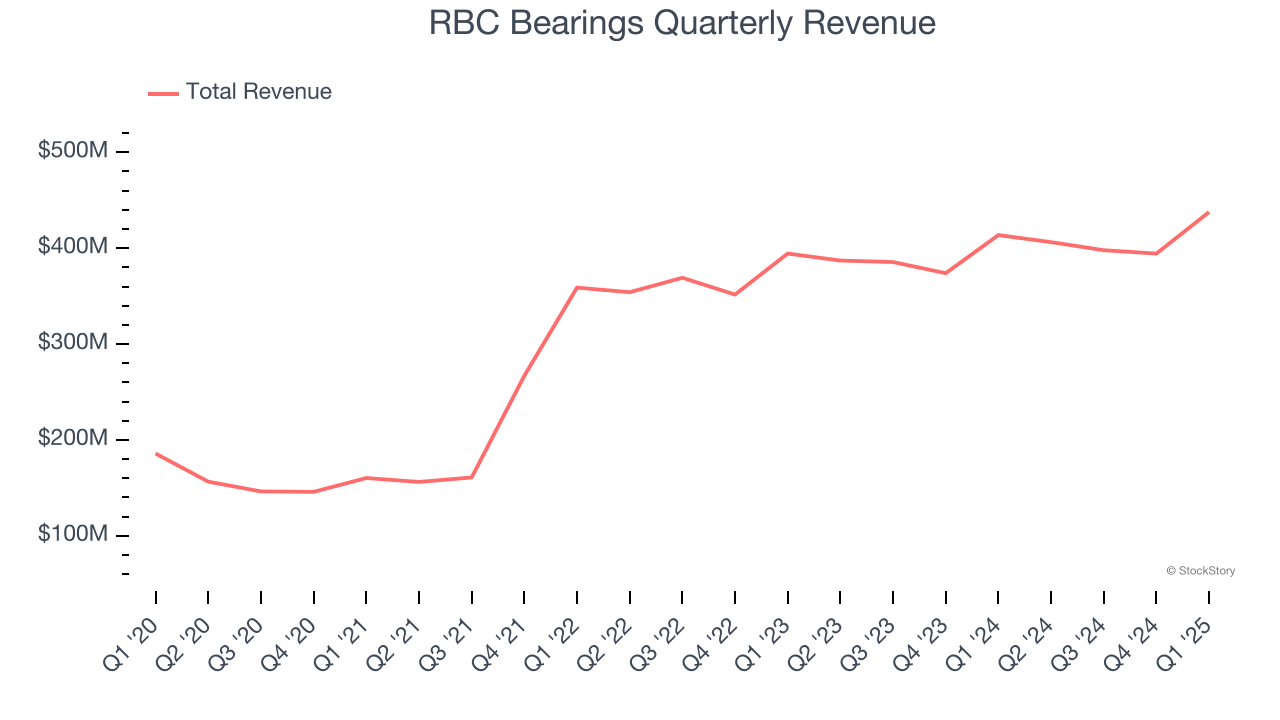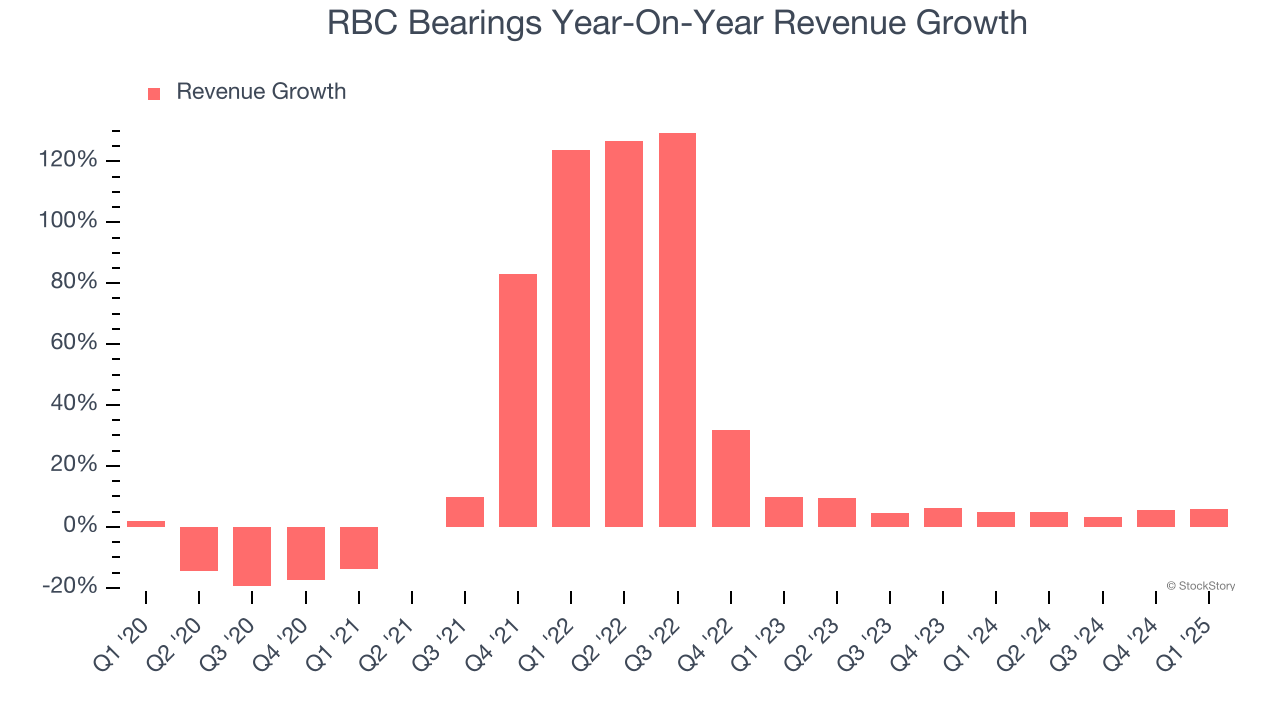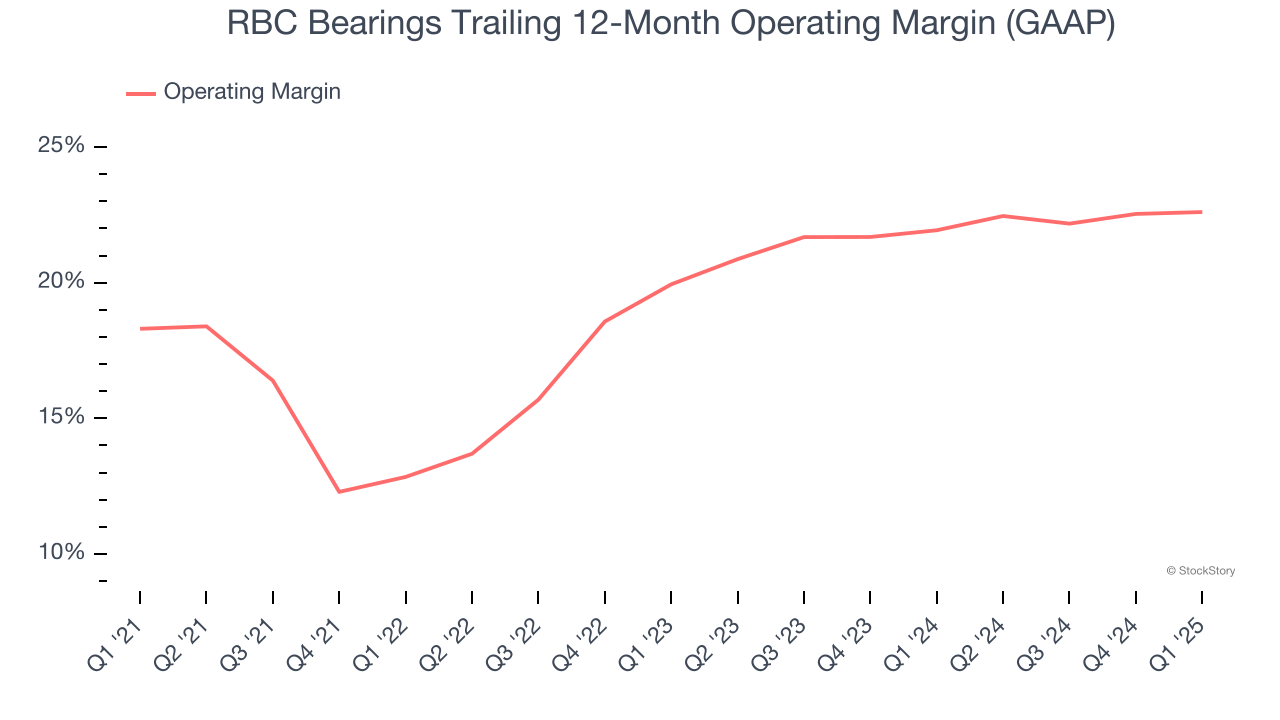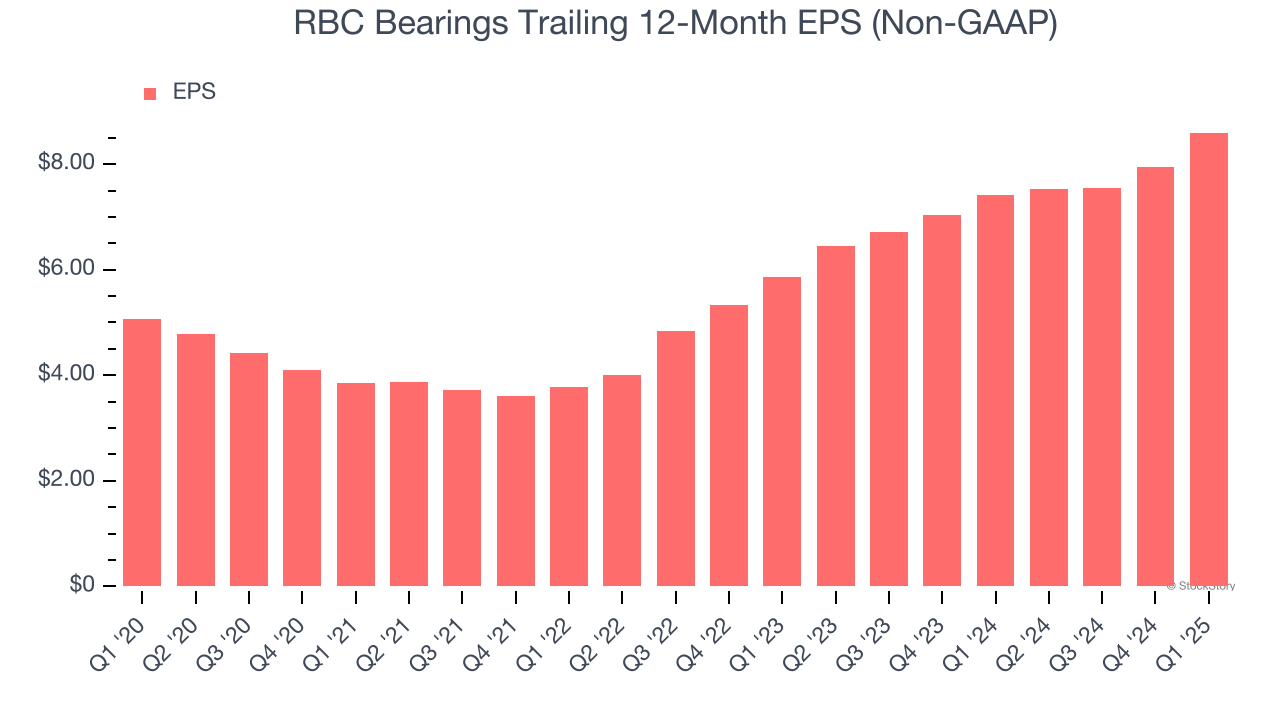
Bearings manufacturer RBC Bearings (NYSE: RBC) missed Wall Street’s revenue expectations in Q1 CY2025, but sales rose 5.8% year on year to $437.7 million. Next quarter’s revenue guidance of $429 million underwhelmed, coming in 0.9% below analysts’ estimates. Its non-GAAP profit of $2.83 per share was 4.7% above analysts’ consensus estimates.
Is now the time to buy RBC Bearings? Find out by accessing our full research report, it’s free.
RBC Bearings (RBC) Q1 CY2025 Highlights:
- Revenue: $437.7 million vs analyst estimates of $440 million (5.8% year-on-year growth, 0.5% miss)
- Adjusted EPS: $2.83 vs analyst estimates of $2.70 (4.7% beat)
- Adjusted EBITDA: $139.8 million vs analyst estimates of $134.7 million (31.9% margin, 3.8% beat)
- Revenue Guidance for Q2 CY2025 is $429 million at the midpoint, below analyst estimates of $432.8 million
- Operating Margin: 23%, in line with the same quarter last year
- Free Cash Flow was -$188.6 million, down from $70 million in the same quarter last year
- Market Capitalization: $11.48 billion
“I am proud of our team’s outstanding performance in Fiscal 2025,” said Dr. Michael J. Hartnett, Chairman and Chief Executive Officer.
Company Overview
With a Guinness World Record for engineering the largest spherical plain bearing, RBC Bearings (NYSE: RBC) is a manufacturer of bearings and related components for the aerospace & defense, industrial, and transportation industries.
Sales Growth
A company’s long-term sales performance is one signal of its overall quality. Any business can put up a good quarter or two, but many enduring ones grow for years. Luckily, RBC Bearings’s sales grew at an incredible 17.6% compounded annual growth rate over the last five years. Its growth beat the average industrials company and shows its offerings resonate with customers, a helpful starting point for our analysis.

We at StockStory place the most emphasis on long-term growth, but within industrials, a half-decade historical view may miss cycles, industry trends, or a company capitalizing on catalysts such as a new contract win or a successful product line. RBC Bearings’s recent performance shows its demand has slowed significantly as its annualized revenue growth of 5.5% over the last two years was well below its five-year trend. 
We can dig further into the company’s revenue dynamics by analyzing its most important segments, Diversified Industrials and Aerospace and Defense, which are 35.9% and 64.1% of revenue. Over the last two years, RBC Bearings’s Diversified Industrials revenue (general industrial equipment) averaged 5.4% year-on-year declines. On the other hand, its Aerospace and Defense revenue (aircraft equipment, radar, missiles) averaged 28.4% growth.
This quarter, RBC Bearings’s revenue grew by 5.8% year on year to $437.7 million, missing Wall Street’s estimates. Company management is currently guiding for a 5.6% year-on-year increase in sales next quarter.
Looking further ahead, sell-side analysts expect revenue to grow 7.5% over the next 12 months. Although this projection suggests its newer products and services will spur better top-line performance, it is still below average for the sector. At least the company is tracking well in other measures of financial health.
Software is eating the world and there is virtually no industry left that has been untouched by it. That drives increasing demand for tools helping software developers do their jobs, whether it be monitoring critical cloud infrastructure, integrating audio and video functionality, or ensuring smooth content streaming. Click here to access a free report on our 3 favorite stocks to play this generational megatrend.
Operating Margin
RBC Bearings has been a well-oiled machine over the last five years. It demonstrated elite profitability for an industrials business, boasting an average operating margin of 19.9%. This result isn’t surprising as its high gross margin gives it a favorable starting point.
Looking at the trend in its profitability, RBC Bearings’s operating margin rose by 4.3 percentage points over the last five years, as its sales growth gave it operating leverage.

This quarter, RBC Bearings generated an operating profit margin of 23%, in line with the same quarter last year. This indicates the company’s cost structure has recently been stable.
Earnings Per Share
Revenue trends explain a company’s historical growth, but the long-term change in earnings per share (EPS) points to the profitability of that growth – for example, a company could inflate its sales through excessive spending on advertising and promotions.
RBC Bearings’s EPS grew at a solid 11.1% compounded annual growth rate over the last five years. Despite its operating margin expansion during that time, this performance was lower than its 17.6% annualized revenue growth, telling us that non-fundamental factors such as interest and taxes affected its ultimate earnings.

We can take a deeper look into RBC Bearings’s earnings quality to better understand the drivers of its performance. A five-year view shows RBC Bearings has diluted its shareholders, growing its share count by 26.2%. This dilution overshadowed its increased operating efficiency and has led to lower per share earnings. Taxes and interest expenses can also affect EPS but don’t tell us as much about a company’s fundamentals. 
Like with revenue, we analyze EPS over a more recent period because it can provide insight into an emerging theme or development for the business.
For RBC Bearings, its two-year annual EPS growth of 21.1% was higher than its five-year trend. We love it when earnings growth accelerates, especially when it accelerates off an already high base.
In Q1, RBC Bearings reported EPS at $2.83, up from $2.17 in the same quarter last year. This print beat analysts’ estimates by 4.7%. Over the next 12 months, Wall Street expects RBC Bearings’s full-year EPS of $8.60 to grow 27.5%.
Key Takeaways from RBC Bearings’s Q1 Results
We enjoyed seeing RBC Bearings beat analysts’ EBITDA expectations this quarter. We were also happy its EPS outperformed Wall Street’s estimates. On the other hand, its revenue slightly missed and its revenue guidance for next quarter fell slightly short of Wall Street’s estimates. Zooming out, we think this was a mixed quarter. The stock remained flat at $369.50 immediately following the results.
Big picture, is RBC Bearings a buy here and now? What happened in the latest quarter matters, but not as much as longer-term business quality and valuation, when deciding whether to invest in this stock. We cover that in our actionable full research report which you can read here, it’s free.





